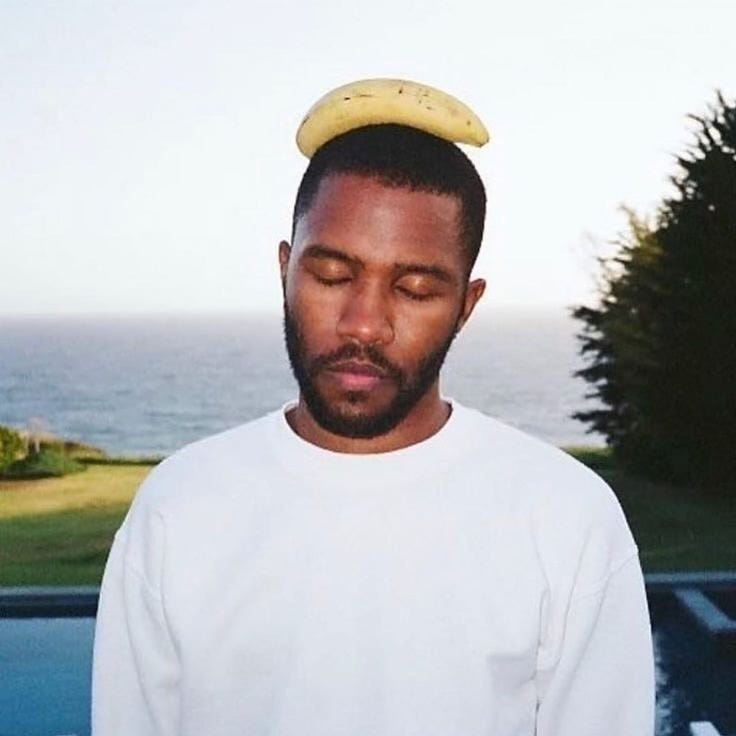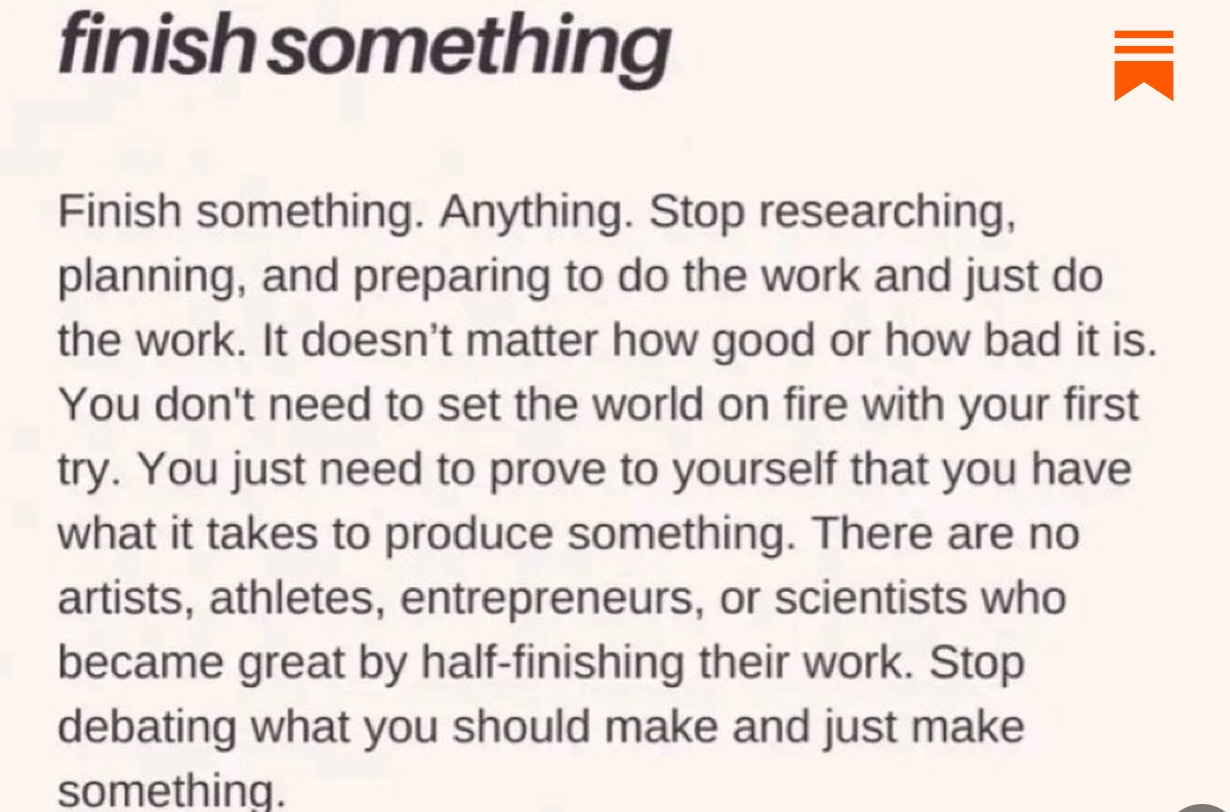Three Things This Week
Dance, Finish, Disappear
Something to Learn : Finish Something
I saved a screenshot this year that says: “Finish something. Anything. Stop researching, planning, and preparing to do the work and just do the work.”
It’s been sitting in my phone like a koan, irritating and true.
I may not be the only one, but I know for sure I’ve built an entire culture around preparation. Another course, another certification, another mood board before I begin. The planning becomes its own drug. Safer than execution, easier than failure. Always working but never actually doing the thing.
The Buddha talked about this tendency as a subtle form of aversion. We avoid the present moment’s demand by perpetually preparing for a future one. Meditation teachers see it constantly: students who read every book about practice but never sit for more than a week straight.
Our prefrontal cortex loves planning because it creates the illusion of control. But creative work requires us to surrender that control and just begin. You can’t plan your way into flow. You stumble into it by starting.
This year I’ve been practicing the art of the ugly first draft. The prototype that barely functions. The essay that doesn’t know what it wants to say yet. It’s not because I’ve lowered my standards, but because I’ve learned that excellence emerges from iteration, not immaculate conception. The same goes for all the projects i’ve started but never finished. I’m letting go of the perfectionist within me this week.
So if you’re reading this, finish something this week. It doesn’t need to be good. It needs to be done.
Something to Practice : Dance This Week
I want you to dance this week.
Not the kind you do at weddings after three whiskeys , though that counts too I guess. I mean the deliberate act of moving your body to music as a practice, the same way you might approach meditation or a morning run.
Recent research out of Australia (of all places) compared dance movement therapy to traditional interventions for depression and anxiety. The results were WILD. Participants showed improvements comparable to what’s typically seen with SSRIs, but through rhythm and embodiment instead of pharmacology. Now this isn’t at all about replacing medication for those who need it. It’s about recognizing that we have more tools than we think, and some of them have been with us since before we had language.
The mechanism makes sense in my mind. Dance combines cardiovascular exercise with social connection, self-expression, and present-moment awareness. The proprioceptive feedback your awareness of your body moving through space activates the insula, a brain region involved in emotional regulation.
But here’s what the studies don’t really tell you: dance returns you to your body in a way that thinking never can. Depression and anxiety often manifest as dissociation, a floating above your physical self. Dance is the opposite. It’s full occupancy of the flesh.
In my years working with meditation students, I’ve watched people spend months trying to quiet their minds on a cushion, fighting thought after thought. Then they take one dance class and discover what they were looking for. It’s not the absence of mind, but the presence of body. I believe in this so much I’ve begun teaching a form of movement that integrates meditation, breathwork and movement in my retreats.
This week, just once, put on a song and move for the length of it. Alone in your kitchen. No performance, no technique. Fellas, this might sound stupid or scary but I promise no one has to know. It’s just your body remembering what it already knows.
Just one song. That’s the practice. Here’s a playlist for it.
Something to Enjoy: Frank Ocean and the Art of Creative Restraint
Last week I spent an inordinate amount of time thinking about how Frank Ocean hasn’t released an album in eight years. And that might be the most important cultural statement he’s made.
Culture judges creative health by output. We’re all expected to produce constantly; drop projects annually, maintain social presence, perform productivity. Our algorithm demands feeding.
Here’s what’s interesting about Frank Ocean: instead of fading into irrelevance, his cultural power grew. This is what creative restraint looks like. Not because he’s blocked—he’s released magazine issues, art installations, luxury products etc. He’s creating but on his own schedule.
Each of us is destroying our health because we believe consistency means constant. That gaps in output equal failure, or that we’ll get left behind. We’ve all internalized this belief that if we’re not producing and posting proof of it, we’ll fade into irrelevance.
But creativity isn’t manufacturing. Our nervous systems aren’t designed for perpetual production. People like Frank are teaching us silence is generative.
Your body’s rest state (when you’re not producing) is where experiences crystallize into ideas. Where the next thing worth making takes shape. It’s not downtime, I call it depth time.
Frank has the luxury of eight-year silence because Blonde made him financially free. Most of us don’t have that privilege. That’s the economic reality, not a character flaw.
But the biology doesn’t care about your bank account. Your nervous system needs rest regardless. So practice restraint in whatever small ways you can. Skip one week of posting. Say no to one thing. Take actual lunch breaks.
The hardest truth: your value as a creative has nothing to do with your output. Buddhism has known this forever—non-doing isn’t laziness, it’s wisdom. Not every moment requires production. Sometimes the most creative thing you can do is stop.
Protect your silence, even when everything around you says you can’t afford to.
Retry
—
What are you not doing this week?




ohh to step out of the endless stream of research...... :)
every first draft is a job well done - because all a first draft has to do is exist! that’s more than half the work :)